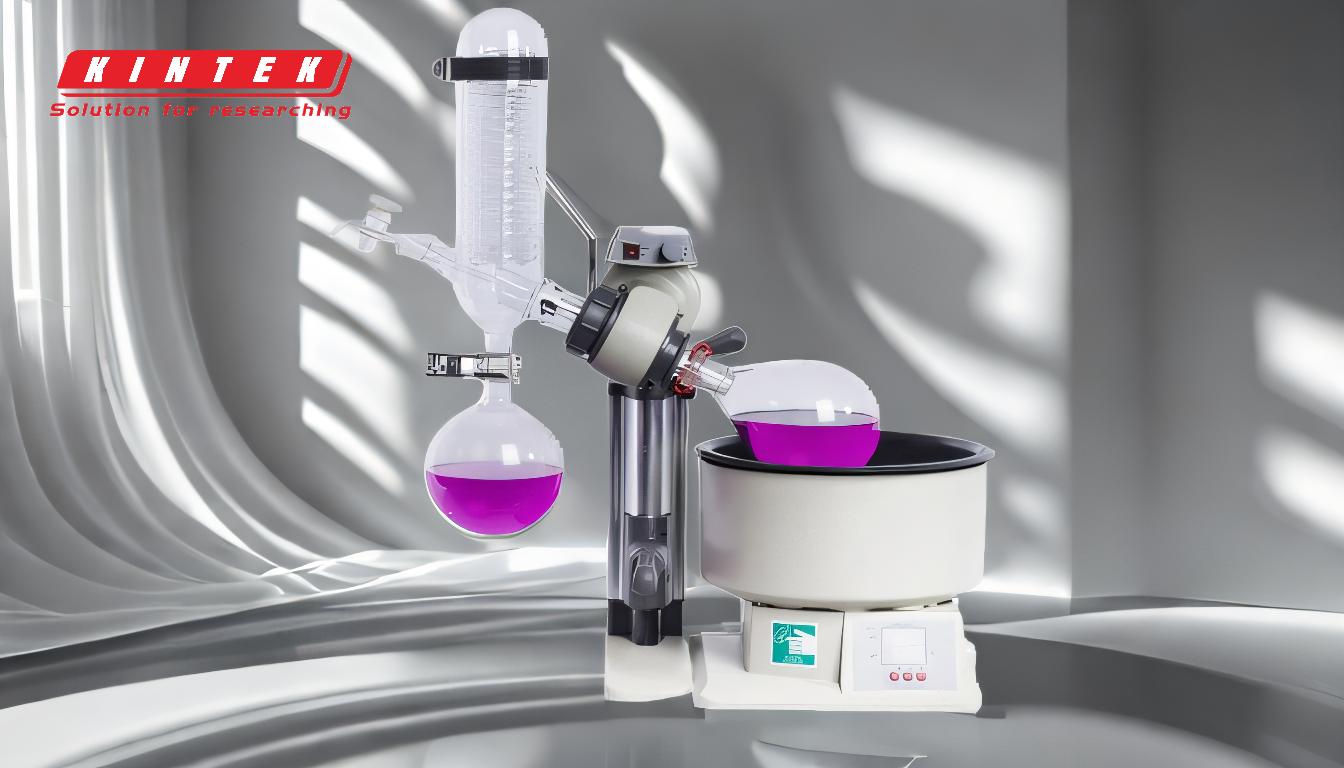Rotary evaporation is a critical technique in chemical and organic laboratories, primarily used for the efficient and gentle removal of solvents from samples. This method is particularly valuable for isolating desired compounds after chemical reactions or purification processes. By reducing the pressure and lowering the boiling point of the solvent, rotary evaporation allows for solvent removal at lower temperatures, preventing thermal degradation or unwanted side reactions. It is widely employed in solvent recovery, sample concentration, and distillation, making it an indispensable tool in laboratory workflows.
Key Points Explained:

-
Efficient Solvent Removal:
- Rotary evaporation is designed to remove solvents from solutions, especially those with high boiling points, in a controlled and efficient manner.
- At atmospheric pressure, high temperatures would be required to evaporate such solvents, which could damage heat-sensitive compounds or lead to side reactions like oxidation or decomposition.
- By lowering the pressure, the boiling point of the solvent is reduced, enabling evaporation at lower temperatures.
-
Gentle Handling of Sensitive Compounds:
- The process is particularly useful for isolating delicate compounds that may degrade at high temperatures.
- The combination of reduced pressure and a warm-water bath ensures that solvents are evaporated gently, preserving the integrity of the desired product.
-
Applications in Organic Laboratories:
- Rotary evaporation is widely used in organic synthesis and purification processes, such as after column chromatography or separatory-funnel extractions.
- It is also employed in solvent recovery, allowing laboratories to reuse solvents, which is both cost-effective and environmentally friendly.
-
Key Components and Mechanism:
- A rotary evaporator consists of a rotating flask, a vacuum system, a warm-water bath, and a condenser.
- The rotating flask increases the surface area of the solution, promoting faster evaporation.
- The vacuum system reduces the pressure, lowering the boiling point of the solvent.
- The warm-water bath provides controlled heating, while the condenser collects the evaporated solvent.
-
Advantages Over Traditional Evaporation Methods:
- Compared to open-air evaporation or distillation under atmospheric pressure, rotary evaporation is faster, more efficient, and safer for heat-sensitive materials.
- It minimizes the risk of contamination and ensures consistent results.
-
Versatility in Laboratory Workflows:
- Rotary evaporation is a versatile technique that can be applied to a wide range of solvents and samples.
- It is particularly effective for removing low-boiling solvents, but it can also handle higher-boiling solvents with appropriate adjustments to temperature and pressure.
In summary, rotary evaporation is a cornerstone technique in modern laboratories, offering a reliable and efficient method for solvent removal and sample concentration. Its ability to operate at lower temperatures and reduced pressures makes it ideal for handling sensitive compounds and ensuring high-quality results in chemical synthesis and purification processes.
Summary Table:
| Key Aspect | Details |
|---|---|
| Efficient Solvent Removal | Reduces pressure to lower boiling points, enabling evaporation at lower temps. |
| Gentle Handling | Preserves delicate compounds by minimizing thermal degradation. |
| Applications | Organic synthesis, solvent recovery, sample concentration, and distillation. |
| Key Components | Rotating flask, vacuum system, warm-water bath, and condenser. |
| Advantages | Faster, safer, and more efficient than traditional evaporation methods. |
| Versatility | Suitable for a wide range of solvents and heat-sensitive materials. |
Optimize your lab's solvent removal process—contact us today to learn more!













